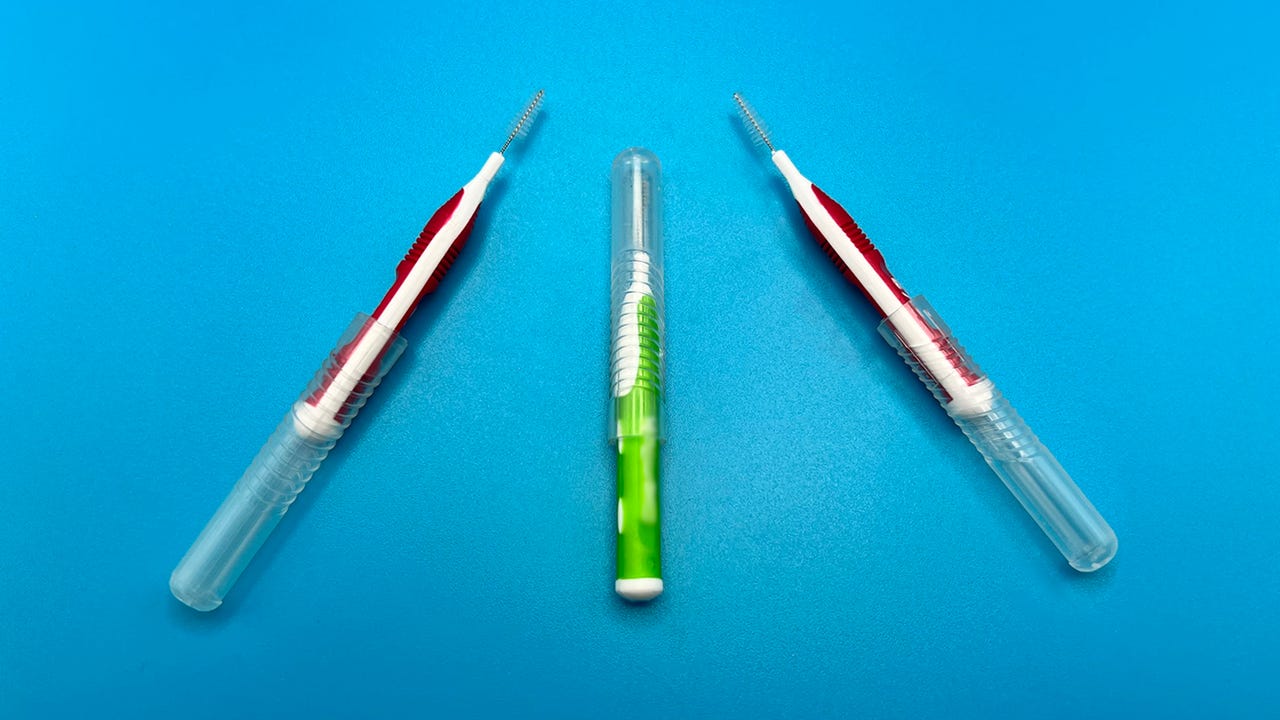
































You're looking at about 75 cents' worth of repair equipment that's helped me save thousands of dollars' worth of iPhones over the years.
Michael Gariffo/Chances are if this scenario hasn't happened to you already, it will eventually: You're taking a phone call and raising the volume because the person on the other end is way too quiet. Then you realize, the volume is already maxed out.
You think there must be something wrong with your phone's earpiece. While it's entirely possible there is a more complex electronic issue with your device, this problem is far more frequently caused by the bane of electronics everywhere: dirt.
The microscopic holes in your iPhone or Android smartphone's earpiece can easily become clogged with dust and debris, even if you're meticulous about smartphone hygiene.
Luckily, there's a quick, easy fix that will cost you about a quarter, and could prevent the need for a very expensive, wasted trip to the smartphone repair shop.
More: iPhone 14 drops the SIM card slot. Here's what that means
The key to this trick is a small piece of dental hygiene equipment called an interdental brush. These brushes are designed to perform the same duties as dental floss, and are especially useful for those with braces and orthodontic appliances.
What makes them ideal for our purposes is the fact that their bristles are only about 0.02mm to 0.03mm wide, far smaller than most electronic cleaning brushes, and thinner than most human hairs. Their minuscule diameter makes it possible for them to get into the almost-microscopic perforations in your phone's earpiece, where few other brushes can reach.
Best of all, you can find bags of 15 to 75 of these for$4 to$10, depending on the brand. This makes the cost per brush less than 25 cents in most cases. You can even reuse them multiple times before you have to toss them out.
Each one of the bristles is only 0.02mm to 0.03mm wide, skinny enough to fit into even the tiniest earpiece perforations.
Michael Gariffo/Take the cap off your interdental brush (if it has one) and make sure the little wire at the center is straight. Thankfully, most manufacturers are careful to eliminate sharp edges on these wires that would damage your gums if the brush were being used for its intended purpose. Still, we'll want to be careful with it near your smartphone's glass display, all the same.
Here's the before. It might not look super dirty, but wait till you see the difference in the "after" image below...
Michael Gariffo/Bend the wire to the angle that best allows you to get it into your phone's earpiece. This will usually be a 90-degree angle, but try whatever feels most comfortable for you.
The entire brush head is about 1/4 inch long, to give you an idea of just how tiny those bristles are.
Michael Gariffo/Use the brush to gently scrub up and back across the surface of the earpiece, alternating up-and-down strokes with side-to-side strokes to make sure you get into every nook and cranny. Repeat the process for 30 seconds or so.
Once you're satisfied that you've gotten out all of the dirt, use a soft cleaning cloth, soft brush, or some compressed air to wipe or blow away any debris freed by your brushing. This makes sure it doesn't accidentally become trapped in the earpiece again.
Here's the "after." You'll notice you can actually see the spaces in the earpiece grille's mesh now. No more sound-blocking dirt clogging them up!
Michael Gariffo/Place a call to test your earpiece volume. If it's better, but you still feel it should be louder, try repeating the process again, using very slightly more force on the brush head. Be careful to never push too hard; smartphone earpiece grilles can be delicate. If this still doesn't improve your volume, it likely means there is a more complex issue with your device.
That said, I've never had this fix fail on me, or any of the many friends and family I've done it for. They're usually amazed by just how quiet their phones had gradually become, and by how loud they're once again capable of being.
More: iPhone 14 Pro vs. iPhone 13 Pro: Is it worth upgrading?
If you're anything like me, you find a special joy in discovering unexpected and extremely helpful uses for cheap little items like these. In this case, Interdental brushes can be used in cleaning many other parts of your smartphone, and all of the other electronics we all struggle to keep clean and healthy. Their tiny bristles make them ideal for everything from dust-clogged charging ports, to cooling fan grills, to USB cables.
Any cleaning process can result in damage if done improperly. In this case, the danger is using too much force. To determine what a safe amount of force is, I'd recommend using one of these tiny brushes for its intended purpose: cleaning between your teeth. If you're using enough force for it to hurt you, that would also be a dangerous amount of force for your device. Gentle strokes in multiple directions are all you should need to get your smartphone, or pearly whites, shining like new.
Compressed air and softer, larger brushes can be useful for removing freed-up debris, but there's really no other tool I've found that's nearly as good at doing the initial cleaning. Compressed air can actually have a detrimental effect if used first, pushing the clogging dust and debris further in, instead of removing it. Softer brushes, or even things like toothbrushes with thicker bristles often simply accomplish nothing.
 Tags chauds:
Téléphones intelligents
IPhone iPhone
Tags chauds:
Téléphones intelligents
IPhone iPhone